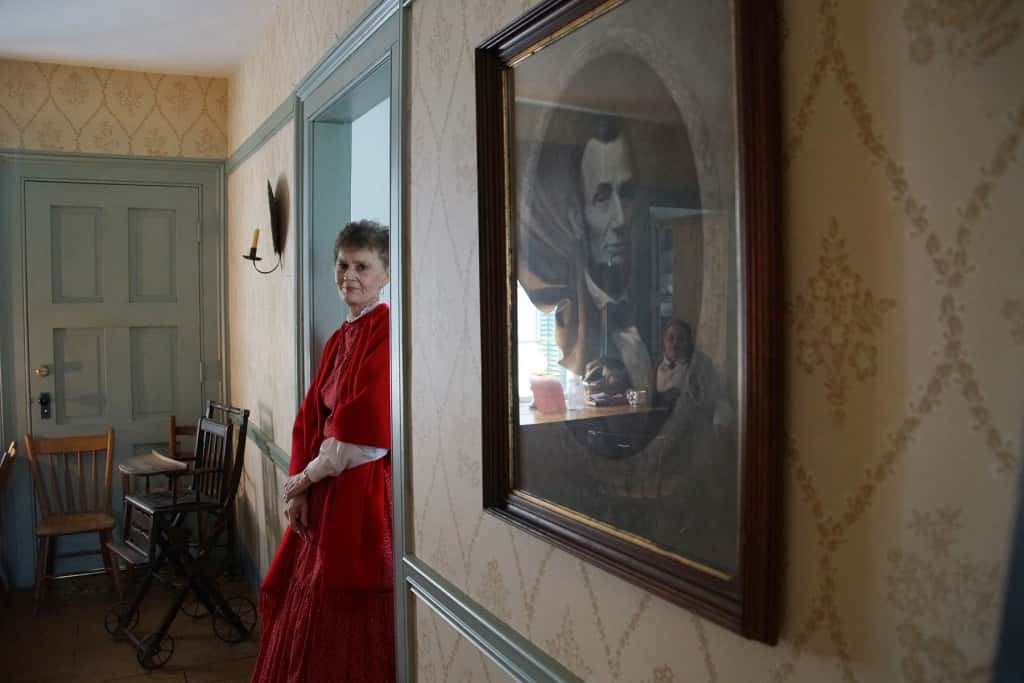
One of the outstanding paradoxes humans have discussed for years is the question of what came first, the chicken or the egg? If chickens lay eggs, and hatched eggs lead to chickens, which came first? No one knows. No one will ever know. It will be debated forever. Likewise, we regularly discuss which needs to change first in our society, racist attitudes or racist institutions?
Racism has been a part of the United States of America since the Pilgrims landed on Plymouth Rock in 1607. The attitudes toward the indigenous First Nations people of the so-called New World are obvious. They were considered to be savages, and uncivilized. Despite the myth of Thanksgiving, the depopulation and genocide that followed are irrefutable.
As the British colonies developed and eventually became these United States, racist attitudes helped to create institutions that created, developed and maintained disparities based on racial differences. Even though the concept of race as we know it had not been fully developed or articulated at this point, it played a powerful role. Four hundred and eleven years later we can look back at American history and discern the causes of racial disparities. Clearly policies, laws, customs, and intentionally discriminatory behaviors have drastically altered the lives of those considered non-white in a negative way and the lives of whites in a positive way.
This can be seen in multiple measures of our lived experiences. Educational outcomes are predictable based on race. Economic outcomes can equally be discerned by looking at race. The main institutions of America are embedded with tools that maintain disparate outcomes year after year, decade after decade, century after century, regardless of the people within those institutions. It is obvious to many that we need to change our institutions in order to change these disparities. The question becomes, how do we do this?
On the surface it appears to be a no-brainer. Just change the way the institutions work and the disparities eventually go away. Reform our criminal justice system and the huge disparities in incarceration go away. That’s the argument I hear a lot. Elect more people of color and our political system becomes fairer and more equitable, right? Teach our educators to be more culturally aware and our education outcomes improve, right?
We know these things will make positive impacts. Numerous studies over decades have shown us the power of change. But why is change so hard to come by in America. The blatantly racist mindsets that were so obvious for so long have shifted. In a way they simply went underground. As I discussed in a previous essay, they went to a safe space known as the Backstage. They are increasingly coming onto the Frontstage again. The rise in race related attacks across the country, whether they be verbal attacks or actual physical attacks is very alarming.
Implicit bias theory teaches us that even when people reject racist stereotypes, once they become part of our unconscious mind, they lead people to act in racist ways without their awareness. It has become automatic. White people clutch their purses in the presence of black people because they been bombarded with images of blacks as criminals their entire lives. Arabs and Muslims scare people on airplanes because we’ve seen images of them as terrorists in television and movies for decades. People had fear before the 9/11 attacks.
These implicit racial biases lead to the development of habits. These habits are what lead to what people refer to as micro-aggressions. Micro- aggressions are everyday acts of intolerance and discriminatory treatment, attitudes and actions, which cause irreparable harm to those who are victimized. Yet, most people are so oblivious to the fact that they commit these acts. They are the discriminatory chickens of our racist eggs. Combined with very overtly racist attitudes and actions, they can be deadly.
How then do we change our nation’s long history of discrimination and racism? How do we change our institutions to eliminate racism? These are difficult questions with multiple answers depending on the person you ask. These are questions debated in barbershops and the halls of academia at the same time. I don’t have the answer. I do have a theory. I think we can use history to answer these questions.
Can we learn from previous institutional changes? Are there tools and ideas we can use from the past to change the future? I believe so. Let’s look at some examples that illuminate how institution changes have manifest themselves in the nation’s history.
When the Constitution was debated and eventually signed in 1787, thirty-nine white men signed it that day. Women were routinely denied to vote around the country and the Constitution at that time did nothing allow them the right to vote nationally. All state except New Jersey at that time prohibited women voters. They eventually capitulated as disenfranchised women as well. After a 56 to 25 vote in the Senate in June 1919 and ratification by 36 states concluding with Tennessee, the Nineteenth Amendment became law on August 18, 1920.
It stated: “The right of citizens of the United States to vote shall not be denied or abridged by the United States or by any State on account of sex.”
The battle for women’s suffrage had lasted many decades. It required a great deal of effort to change something that had been cemented in the hearts and minds of men. Women had been seen as the “weaker sex” and deemed incapable of handling the intellectual qualifications of voters. Little did it matter that women out numbered men. It did not matter that it was patently and obviously unfair and biased. Men held the power to determine if women should be allowed to vote.
The battle to change these attitudes took a significantly long time. For many men, they saw giving women the right to vote as something that would take away something they cherished. Actually two things they cherished would be lost by women being in a position to vote. Men would lose their status as controlling the important decision of who should govern the local, state and national governments. Secondly, once women had this right, they would have more control over the everyday decisions about how they lived their lives.
It was not just women voting that men were afraid of. They were afraid of losing power over women in social affairs. Women took their victory as a sign that they could then demand other changes in society. No longer would they accept “women’s jobs” or roles. Women took the position that they had rights above and beyond just the simple right to vote. It changed America. We would never go back to being what we were. It was a sweeping paradigm shift, but the battle for equality continues.
How did it happen? Did the institutions that controlled who could and could not vote suddenly decide that yes women should have this right? No. Women forced men to change their attitudes and accept that women should no longer be second-class citizens. Men were required to change their hearts and minds. Once that happened, the institutions changed and put in place measures to allow the shift to take place. It was not easy to get men to accept these changes but eventually they many reluctantly did.
This is one example of how institutional change comes out of shifts in attitudes and beliefs. First women had to prove that they had changed from being seen as passive victims of discrimination. Then they began to fight for and demand change. Slowly but surely men began to advocate alongside the women for these changes. Then it happened. Not overnight, for sure, but it happened and now nearly one hundred years later we take this right for granted.
When Emmett Till was murdered in Money, Mississippi in 1955 it sent shock waves through the black community. When the open casket funeral was held in Chicago and the grisly images were printed in Jet and Ebony magazine, America changed. The hearts and minds of black folk changed. No longer would we simply be patient and wait for the discriminatory treatment of blacks to continue without massive resistance. We had always resisted, from the time we were dragged onto slaving ships. The everyday resistance had always taken many forms. America’s first abolitionists were the Africans held in bondage.
We started institutions within our community to protect ourselves and demand our freedom. The African Methodist Episcopal Church (AME) was one of the first institutions we created to advocate for equal protection. Later we conceived of and constructed more powerful means of speaking our mind. Early newspapers like Frederick Douglas’ The North Star allowed us to resist in words. The Underground Railroad allowed us to resist with our feet. David Walker’s Appeal, the inflammatory anti-slavery manifesto he penned in 1829 taught us to resist and castigated whites for how they treated Africans in this country.
Despite 200,000 of us fighting in the Union Army and Navy during the Civil War and the Reconstruction Amendments that gave us conditional freedom from slavery, citizenship rights and black men the elective franchise, we still had to continue our resistance. Less than a generation later, lynching of blacks became the order of the day across the country. Thousands of black women, children and men were lynched with impunity by white mobs from Texas, Florida, Mississippi, Indiana, Wisconsin and Minnesota just to name a few of the states that allowed this barbarity to reign without punishment of the murderers. This went on unabated from the 1870’s through the 1960’s in large numbers including nearly five thousand documented cases with mostly black victims.
Violence against blacks took other forms as well. White mobs attacked and destroyed black communities across the country. In 1906 the Atlanta race riot showed that whites could openly, and brazenly flaunt their power to beat, and kill us while simultaneously looting and destroying our property. Just two years later the destruction in Springfield, Illinois required the calling out of the militia to end the murderous rampage of white mobs in Abraham Lincoln’s hometown.
The violence accelerated during and just after WWI. In 1917 white mobs beat, maimed and killed blacks while looting their homes and businesses in East St. Louis, Illinois. The summer of 1919 was the bloodiest year of these attacks by whites. In nearly thirty cities, including Elaine, Arkansas and Chicago, whites terrorized, and destroyed any sense of security we had.
In 1921 all of black Tulsa was destroyed by white mobs. Over 300 blacks were killed and thirty-five square blocks of the black community were burned to the ground. This community known by some as “Black Wall Street” but officially called Greenwood was leveled by fire including, according to reports, incendiary bombs being dropped from airplanes. This massive attack epitomized the power whites had over blacks. None of these terrorists mob members were charged for their crimes and thousands of blacks left Tulsa never to return. These are the race riots you did not learn about in school.
Jim Crow segregation was the norm though out the South including those states that did not join the Confederacy, and even in many Northern states as well. It was a system of control, which used massive doses of violence to maintain power over the everyday lived experiences of blacks. Blacks fled the violence by the millions during the Great Migration. Over six million fled the South from 1930-1970.
Montgomery, Alabama became the flashpoint in the struggle when the Montgomery Bus Boycott began after Rosa Parks was arrested. She was not the first black person to defy segregated seating in Alabama. However, her case became the rallying cry in Montgomery, leading to a lawsuit, which ultimately ended the boycott. The anger over the Till lynching in August and the further frustration of the arrest of Parks in December of that 1955, led to the expansion of the organized resistance which became known as The Civil Rights Movement.
It began with a change of attitude. Blacks around the nation began to assert their God given right to be treated as human beings. No longer would the type of resistance we were using be enough. No longer could we allow wanton murders to occur without protecting ourselves. Our hearts and minds were changed forever by the events of 1955.
Our institutions grew stronger as a result of this change. We began to challenge the norms of America in courthouses and in the streets of Montgomery, and places as far away as Milwaukee. We shouted from the mountaintops of Georgia and the beaches of Jacksonville, Florida. We forced change to happen in this great, deadly period of resistance. White allies joined the fight and lost their lives.
We lost many along the way. An assassin in my home state of Mississippi murdered Medgar Evers, the director of the state chapter of the National Association for the Advancement of Colored People (NAACP) with a sniper rifle in his driveway in Jackson. Four young girls were murdered in the dynamite attack at the Sixteenth Street Baptist Church in Birmingham just a few short weeks after the March on Washington in 1963.
Malcolm X, Dr. King, Fred Hampton and many other leaders died in this struggle. But their deaths were not in vain. Change happened. Institutions changed because the hearts and minds of whites changed. The embarrassment of the attacks on blacks in Birmingham led to changes. America was criticized in the press around the world for the ugly images of police brutalizing non-violent marchers on Bloody Sunday in Selma, firefighters attacking black children with water hoses in the Birmingham campaign and the brutal, deadly beatings of the Freedom Riders.
Many whites resisted these changes and continue to resist the implementation of these changes. That will never end. Racism has a powerful hold on the hearts and minds of too many. We are aware that this is a difficult fight. We either continue to resist and demand change or accept this as our fate.
Institutions are vessels in our society, which are occupied by people. They don’t change without the people within them changing first. From the outside looking in, we demand change. We ask whites, which control these institutions, to make changes. Too many of these institutions continue to maintain a structure and standard operating procedures, which lead to detrimental, lived experiences for people of color.
Just as Dr. King said so eloquently in his Letter From a Birmingham Jail:
“For years now I have heard the word “Wait!” It rings in the ear of every Negro with piercing familiarity. This “Wait” has almost always meant “Never.” We must come to see, with one of our distinguished jurists, that “justice too long delayed is justice denied.”
The time is now. It’s actually long overdue. Our patience with America has waned. Our everyday frustrations are too much to bear. No longer can we continue to accept that whites don’t care enough about us to change. Lip service is not enough. Changes within the nation’s institutions comes from those who control them. In most cases, this means white people. You need to change. It’s a harsh reality that far too many whites are unwilling to accept. Racism in America can only be fixed by white people! Prejudice is a part of every community. However, prejudice plus power makes racism so extraordinarily insurmountable in this country.
Until and unless white America wakes up and changes it’s attitudes towards blacks we will continue to suffer as a nation. The ills of the black community are the ills of America. As the Kerner Commission told us in 1967:
“White society is deeply implicated in the ghetto. White institutions created it, white institutions maintain it, and white society condones it.”
An honest expectation of the modern world’s first Republic is that all of its citizens should enjoy the rights and protections afforded them by the nation’s laws and customs. For far too long the nation has hypocritically denied this to blacks and other people of color. It’s time to change America. It does not matter if the chicken or the egg debate is resolved. Clearly hearts, minds and attitudes need to change for institutions to change. Having the courage to challenge racist attitudes, which include those racist jokes and remarks you hear over Thanksgiving dinner and in other places you occupy is important. Challenging racism in your safe spaces, like your home and your community gives you the courage to challenge it at work, within the institutions you control.
White America, what are you waiting for?














